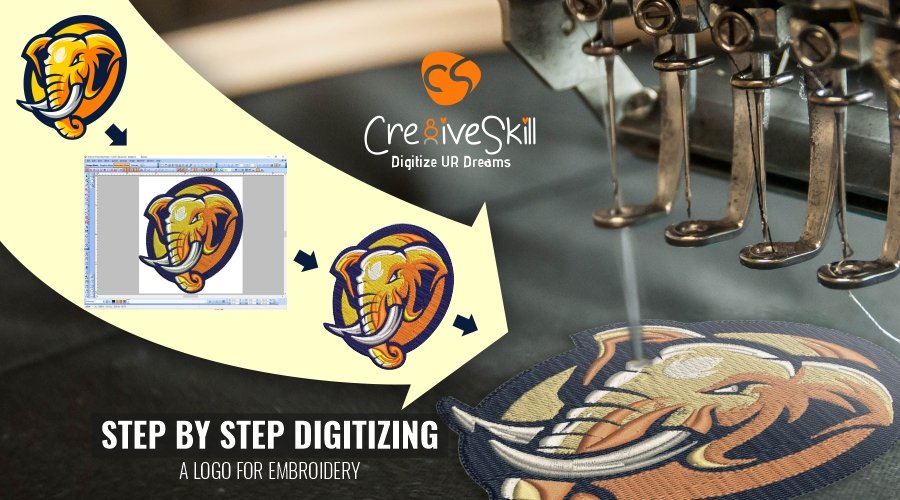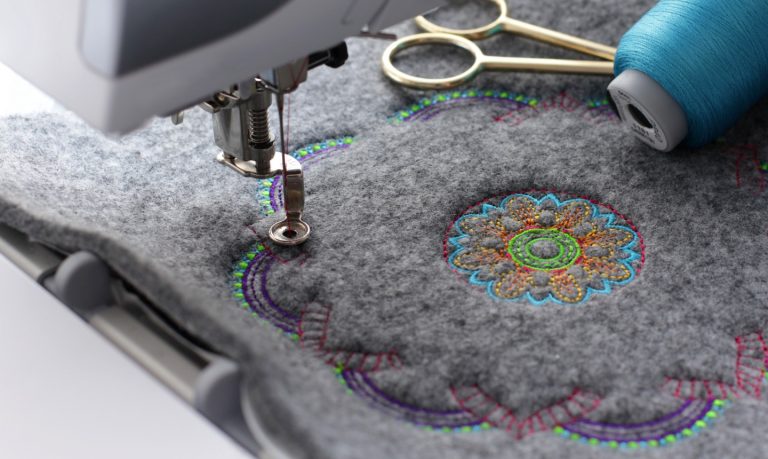Personalized Digitizing for Embroidery: Tailored to Your Demands
Personalized Digitizing for Embroidery: Tailored to Your Demands
Blog Article
Simplifying the Art of Needlework Digitizing: Step-by-Step Overview
As modern technology continues to advance, the digitization procedure has actually become more accessible, enabling fanatics to bring their detailed designs to life with simplicity. In this guide, we will certainly unwind the intricacies of needlework digitizing, damaging down each action systematically to simplify the process and encourage both newbies and skilled embroiderers alike.
Comprehending Needlework Digitizing Software Application
Needlework digitizing software application offers as a vital tool for transforming intricate styles right into digital styles suitable with needlework makers, promoting accurate stitching and modification. This specific software program allows users to import various image file layouts, such as JPG or PNG, and transform them right into embroidery machine-readable formats like DST, EXP, or PES - Digitizing for Embroidery. By utilizing attributes like stitch modifying, rug choices, and string color selection, digitizing software program enables users to manage every aspect of the design procedure
Additionally, progressed embroidery digitizing software program provides devices for creating intricate layouts, changing stitch thickness, and including elaborate details. Users can also preview the style before sewing it out, ensuring precision and lessening mistakes. Additionally, numerous software programs give automated functions that assist enhance the digitizing process, conserving effort and time.
Comprehending the abilities of needlework digitizing software is necessary for attaining top notch results in needlework tasks. By grasping this device, needlework fanatics and specialists can unleash their imagination and bring elaborate designs to life with precision and performance.

Selecting the Right Layout Documents
After acquainting yourself with the abilities of embroidery digitizing software program, the next vital step in the procedure is choosing the ideal style declare your project. Digitizing for Embroidery. When selecting a style declare embroidery digitizing, it's vital to take into consideration the intricacy of the style, the dimension of the end product, and the kind of fabric you will certainly be collaborating with
For complex styles with great details, a high-resolution picture or vector documents is advised to guarantee that the needlework machine can precisely duplicate the style. Additionally, the size of the last product plays a considerable duty in picking the appropriate layout documents. Larger layouts may require higher resolution files to keep quality and sharpness.
Furthermore, the kind of material you will be stitching on affects the choice of design data. Various materials might call for changes in the style file to make sure that the stitches are appropriately lined up and the style looks like intended. By carefully choosing the ideal design documents based upon these factors, you can establish yourself up for an effective needlework digitizing procedure.
Digitizing Devices and Strategies
Using specialized software application and accuracy strategies, digitizing devices are necessary in changing detailed designs into link embroidery-ready data. Needlework digitizing software program, such as Wilcom, Hatch, or Embrilliance, gives the needed platform to convert art work into stitch information. These programs supply functions like stitch editing, underlay alternatives, and lettering tools to ensure the layout converts flawlessly onto textile.
One of the essential methods in digitizing is producing a clear path for the embroidery device to adhere to. This entails digitizing each aspect of the style with accuracy, identifying stitch kinds, thickness, and directions. By making use of devices like digitizing tablets or software-specific plugins, embroiderers can accomplish a high level of accuracy in their digitized layouts.
In addition, grasping the art of underlay stitching is vital for creating top quality embroidery. Underlay stitching supports the fabric and develops a structure for the design, making sure that the final item is both aesthetically enticing and durable. By understanding these digitizing tools and techniques, embroiderers can raise their craft and bring complex layouts to life with accuracy and effectiveness.
Personalizing Stitch Types and Directions
The option of stitch kinds can dramatically impact the general look and structure of the stitched style. By strategically incorporating these stitch types, embroiderers can attain depth and measurement in their styles.
Moreover, the instructions of stitches plays a vital duty in improving the aesthetic charm of the last embroidery. Varying stitch instructions can include texture, highlight certain aspects, and develop aesthetic rate of interest. Altering the angle of stitches can simulate movement or all-natural patterns like hair or plumes. By try out different stitch angles and patterns, embroiderers can bring their designs to life with impressive detail and intricacy. Understanding the art of tailoring stitch types and instructions empowers embroiderers to release their imagination and elevate the high quality of their work.
Testing and Refining Your Digitized Design
To guarantee the Your Domain Name accuracy and high quality of your digitized layout, detailed screening and improvement are vital actions in the needlework digitizing process. Once you have completed the digitization of your layout, it is vital to test it before waging the actual embroidery. Checking allows you to identify any type of possible concerns such as thread breaks, stitch thickness problems, or style distortions that may affect the outcome.

After screening, it is necessary to improve your digitized design based upon the feedback from the test sew-out. This may include tweaking stitch setups, readjusting densities, or making modifications to the total design to achieve the desired result. By repeating with testing and improvement, you can adjust your digitized layout to perfection before moving on with the real embroidery procedure.
Final Thought
To conclude, understanding the art of embroidery digitizing calls for an extensive understanding of the software program, selecting the ideal style documents, making use of digitizing tools and methods, personalizing stitch types and instructions, and screening and improving the digitized layout. By following these steps, embroiderers can streamline the digitizing process and create premium stitched styles with accuracy and performance.
Report this page